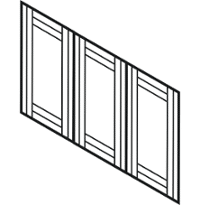1 min read
The Stabilo® Quad Seal Coffee Bag: Brown Bag Blog Series
Welcome Back: The Rovema Brown Bag Blog Series Hello hello! We hope you’re doing well. Welcome to this month’s edition of our Brown Bag Blog...
4 min read
Megan Reschke : Fri, Mar 31, 2023

If you’ve been following along with this series for the past few months, you might want to skip this first section! It’s a recap for our new folks joining today. If you’re reading this series for the first time, WELCOME. We’re glad you’re here.
This is part 4 of our Brown Bag Blog Series dedicated to unpacking (pun intended! 😃) various bag style options for your Rovema vertical form fill seal machine. These posts, like brown bag webinars or in-person meetings, are designed to be short, sweet, and to the point.
From our many years of experience, we know that you should take the time to carefully consider which bag style best fits your product’s needs. However, we’ve often seen throughout the industry that these VFFS bag styles are often chosen by default or given little thought.
Thinking through the strengths and considerations of different bag styles pays off greatly in the long run.
As such, we’re releasing these posts to give you a quick overview of the various bag style options for your Rovema VFFS machine. In each, we outline the advantages and considerations of a given bag style, talk about its appearance and how it is formed, and discuss its place within current market trends.
If you’re new to this series and interested in the other bag styles we’ve explored, you can find ‘em here:
Once you’re caught up, read on for our exploration of unique ways to use Sachet Style Packages.
Want a more in-depth dive? Check out our Comprehensive Bag Style Guide!
A quick side note before we jump into this month’s bag style: the blog posts in this series are a great starting point for finding the right bag style for your Rovema VFFS machine. However, if you’re looking for a more in-depth analysis, be sure to check out our Rovema Bag Style Guide.
Sachet Style Bags are lay flat packages with either 3 or 4 seals. These packages are economical to produce on vertical form fill and seal machines and have a high amount of print area on both the front and back panels (making them a win in most marketing teams’ books). 
3 side seal bags can often be produced at high production speeds, and they are especially ideal for products distributed in small quantities where accuracy is especially important.
Though traditionally made on Horizontal Form Fill Seal baggers or multi-lane sachet machines, they are also an option for your Rovema VFFS machine. The major benefit to running sachets on VFFS vs HFFS? They have a way smaller footprint.

The Sachet Style Bag is a lay flat package with a top seal and two side seals. It also has an optional fourth seal that can be added for premium design purposes.
Because of its design, the Sachet Style Bag is well-loved by marketing teams: it has a very high ratio of print area on both the front and back panels, unobscured by seals or seams.
As mentioned above, the Sachet Style Bag is dreamy for marketing teams because of the large panels on which they can print graphics, copy, and other required information. Sachet Style Bags are also simple and economical to make, and it is easy to achieve high production speeds with them on your Rovema VFFS machine. 
This bag style is great for smaller product amounts where accuracy is important, and they can easily be customized to include hole punches and easy open and reclosable features.
When choosing which bag style to use for your Rovema VFFS bagger, it is important to think through both the strengths and considerations of a given bag style. A few questions you might want to ask yourself if you are considering a Sachet Style Bag are:
If you have more specific questions or want to talk through bag styles for a specific product or project, hit us up here!
For the reasons we explored above, many industries utilize the sachet style bag for their products. Companies using a ROVEMA VFFS machine as their 3 side seal pouch making machine to package the following, among other, products:

In our first blog post in this series, we talked about our “why” for these posts.
Through our many years of experience in the industry, we’ve seen what can happen when customers fail to consider different bag styles and default to one without thinking about their product’s unique needs.
We also know that choosing the correct bag style is a significant undertaking, and we’re happy to help. Whether you’re thinking the Sachet Style bag would be a good fit, or you’re leaning towards one of the many other bag style options available to you, we are here to support you throughout your decision-making process.

For many, the Sachet Style Package is a great choice. Especially if you package small quantities of your product and want an aesthetically-pleasing design, this bag style might be the right fit.
If you want to learn more about running Sachet Style packages on your Rovema VFFS bagger, or if you want to invest in a Rovema VFFS machine as your 3 side seal pouch making machine, please reach out to us here.

1 min read
Welcome Back: The Rovema Brown Bag Blog Series Hello hello! We hope you’re doing well. Welcome to this month’s edition of our Brown Bag Blog...

Editors Note: This blog was originally published in May of 2021 but has been edited and republished with additional content around this topic. A...

1 min read
The Rovema Brown Bag Blog Series: The Final Chapter This blog marks the sixth and final installment of our Rovema Brown Bag Blog Series. Throughout...